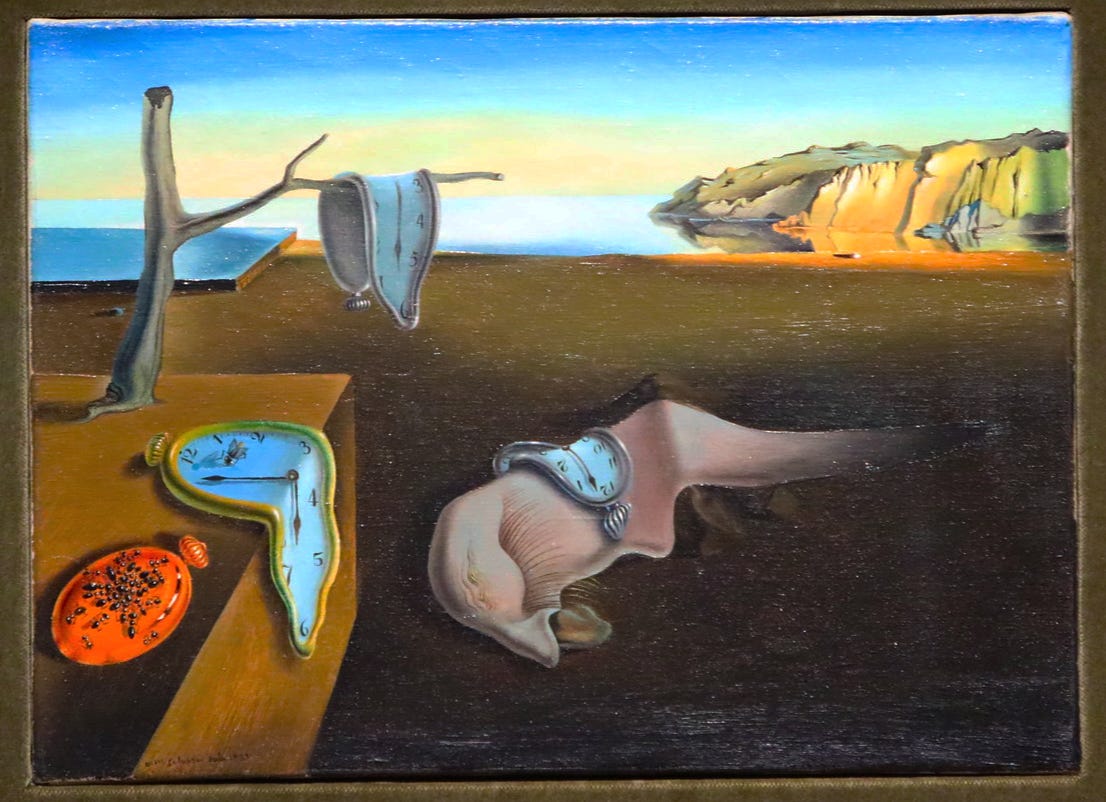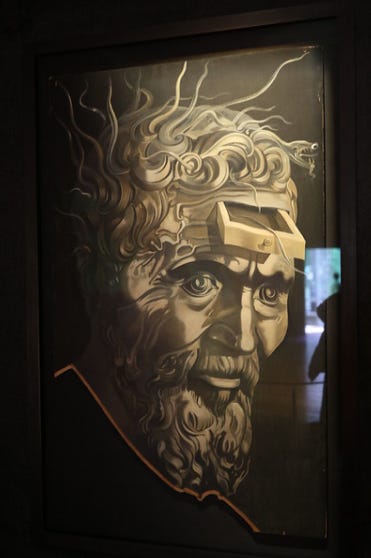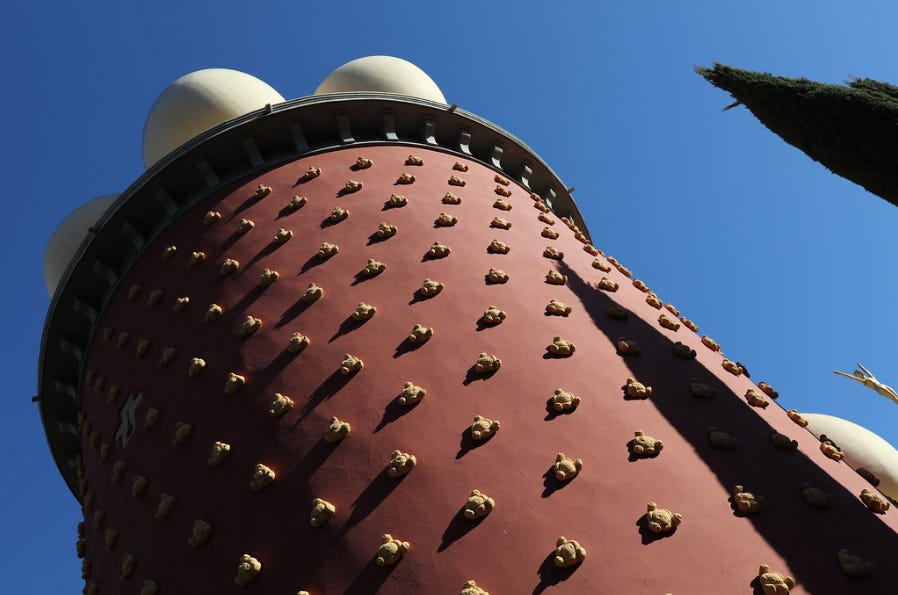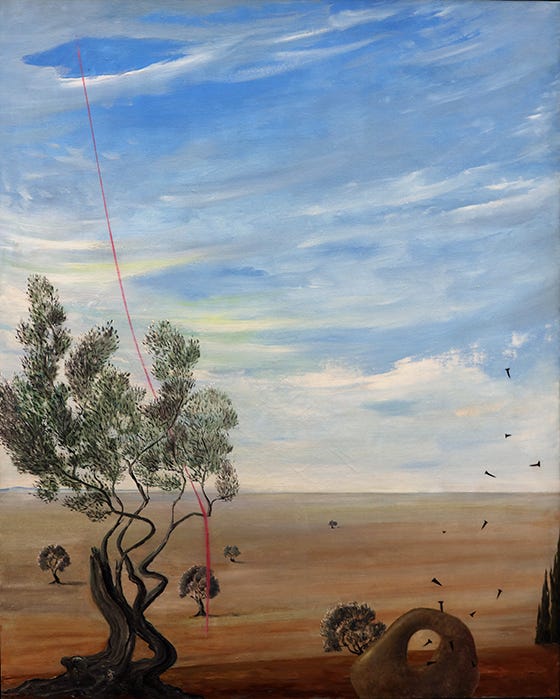The Real Impact of Surrealism
Strangeness Strengthens Memories
“No one can forget it after seeing it,” Gala Dalí said about her husband’s surreal masterpiece, “The Persistence of Memory.”
With three timepieces melted and another crawling with ants, the painting by Salvador Dalí electrified the art world when unveiled in 1931. The dreamscape fuses symbols evoked from the artist’s imagination, along with memories engrained on a gifted mind raised in Catalonia, along the Costa Brava of Northeast Spain.
The strange stays among what we long remember. The ordinary is forgotten, lost among its similar memories. And that is why Dali’s painting with the melted watches has occupied a valuable drawer in my mind. What’s more, it may be that strangeness and absurdity of an event are why we can remember these experiences, even when related as narrative, and not experienced directly.
Surrealism to Inhabit
In his Golden Years after achieving world wide recognition, Dalí purchased an old theater in his familial home town of Figueres. He transformed the space into the Teatro-Museo Dalí. Filled with surreal masterpieces by the artist and his contemporaries, El Teatro also serves as Dali’s mausoleum.
"The fact that I myself, at the moment of painting, do not understand my own pictures, does not mean that these pictures have no meaning; on the contrary, their meaning is so profound, complex, coherent, and involuntary that it escapes the most simple analysis of logical intuition." — Salvador Dalí
Topped with an enormous glass dome, parapets are manned by giant figures with uplifted arms. Enormous cosmic eggs top firebrick red walls adorned with hundreds of loaves of Catalonian bread. Like people, each “loaf” is unique.
Who Knew Such Things Were Possible?
Surrealist works often give me the impression they were created by artists who had personally experienced encounters with the paranormal, such as the work by Evarist Vallès above, Tension. Created in 1982, the painting includes a red thread that connects the celestial parts of the image to the terrestrial, as well as what appears to be nails falling from the sky.
The surrealism movement formally began with the publication of the Manifesto of Surrealism by Andre Breton in 1924. The widespread dissemination of UFO phenomena did not begin to dominate public discussion until Kenneth Arnold’s sightings of something incredible in the air, flying “like a saucer skipped on the water” at supersonic speed in 1947. Soon thereafter it seemed that everyone was seeing things in the sky.
Vision to See New Places to Go
As in art, shock and the unexpected play important roles during paranormal events like UFO encounters. These events are doors into unknown realities from which new information is transferred through novel experiences into the minds of witnesses.
Not only do out of the ordinary experiences help us remember, process and understand, those who witness and report UFO phenomenon may serve to advance understanding and open the possibilities of new realities. Charged and changed with new information, witnesses effect change through their future actions and share new ideas and myths with those around them.
Psychologist Eric Hasseltine reports the people who report UFOs or UAPs are probably different than popularly portrayed. In “The Surprising Psychology of UFO Reporting,” a report in Psychology Today of November 3, 2023, made three key points:
Studies of those who report seeing UFOs show little evidence of psychopathology or attention seeking.
Rather, UFO reporters tend to have richer fantasy lives than average.
UFO reporters also tend to score higher on the Big Five personality trait of openness.
Lasting Impressions
It may be our correspondent who witnessed an apple drop on the ground that apparently fell from a clear, blue sky, witnessed this other, strange reality. The episode is detailed in The Apple Doesn’t Fall Far from The Tree, Usually / Part 2.
“You know, I can still remember like it happened yesterday,” Christopher R said. “I never brought it up with anyone outside my immediate family until I was an adult.”
Salvador Dali called his Theatre-Museum “the world’s largest surreal object.” I humbly disagree. I posit the largest work of surreal art is the universe itself. Whether inanimate or infused with life, the universe often seems to be surreal, at times holding objects and information that do not make sense at first or, at times, ever at all. How can light be both a particle and a wave?
Speaking only for myself, I completely agree with with Gala Dali. Her husband’s painting has stuck in my mind’s eye since I first saw it. However, I don’t remember the first time I saw the painting, yet it feels as if I have known the image for all my adult life. The unreal landscape was an emblem of the times, put in my monde intérieur long before I experienced it with my own two eyes. To borrow a word from Claude Monet, the moment left a real impression.
The image of The Persistence of Memory at the top of the post is from a photograph taken on a visit to the Museum of Modern Art in New York.






